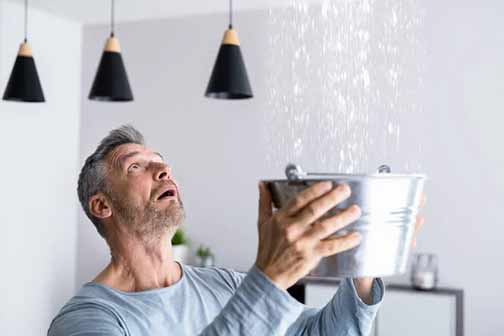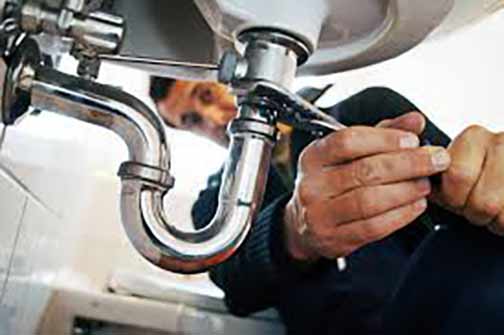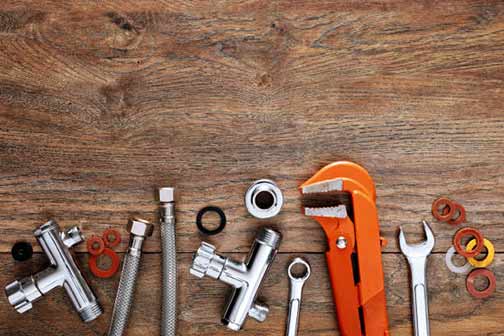
Plumbing emergencies can strike at any time, often when you least expect them. From burst pipes to overflowing toilets, these situations can cause significant damage to your home and disrupt your daily routine. Understanding the gravity of a plumbing emergency is the first step in addressing the issue effectively. It’s important to remain calm and composed, as panicking can lead to hasty decisions that might exacerbate the problem.
The impact of a plumbing emergency can extend beyond physical damage. Emotional stress and anxiety can take a toll on everyone in the household. Recognizing the potential for both immediate and long-term consequences can help you approach the situation with the seriousness it deserves. By acknowledging the gravity of the emergency, you can better prioritize your actions and make informed decisions.
Immediate Steps to Take When You Encounter a Plumbing Emergency
When faced with a plumbing emergency, quick action is crucial to limit the damage. Here are the immediate steps you should take:
First, locate the main water shutoff valve and turn it off to stop the flow of water. This is typically found near the water meter or where the main water line enters your home. Shutting off the water supply can prevent further flooding and damage.
Next, if the emergency involves an appliance such as a washing machine or dishwasher, turn off the appliance and unplug it from the electrical outlet to avoid any electrical hazards. Water and electricity are a dangerous combination, and taking this precaution can help prevent accidents.
If the plumbing issue involves a gas line, such as a gas leak, immediately evacuate your home and contact your gas company or emergency services. Do not attempt to fix a gas leak on your own. Gas leaks pose a serious risk of explosion and require professional intervention.
Additionally, if the emergency is causing significant water accumulation, use towels, mops, and buckets to contain the water and prevent it from spreading to other areas. This can help minimize water damage to floors, walls, and personal belongings.
Assessing the Situation and Identifying the Problem
Once you have taken immediate action to stop the flow of water or gas, it’s important to assess the situation and identify the source of the problem. This will help you determine the best course of action moving forward.
Inspect the affected area for visible signs of damage, such as water stains, puddles, or mold growth. Pay attention to any unusual sounds, such as hissing or gurgling, which could indicate a hidden leak or blockage.
Take note of any foul odors, as these could signal a sewage backup or gas leak. Documenting these observations can be helpful when communicating with a professional plumber.
Additionally, consider the potential causes of the emergency. For example, a burst pipe emergency may be due to freezing temperatures, while a clogged drain could result from improper disposal of items. Understanding the underlying cause can provide valuable insights for both immediate repairs and future prevention.

Contacting a Professional Plumber for Assistance
While some minor plumbing issues can be addressed with DIY solutions, it’s often best to contact a professional plumber for assistance with emergencies. A licensed plumber has the expertise and tools to diagnose and repair the problem effectively.
When contacting a plumber, provide as much information as possible about the situation, including the steps you have already taken and any observations you have made. This will help the plumber prepare for the repair and ensure they bring the necessary equipment.
It’s also a good idea to inquire about the plumber’s availability and estimated arrival time, as well as any potential costs associated with the emergency plumbing service. Knowing what to expect can help you plan and manage the situation more effectively.
In addition to contacting a plumber, consider reaching out to your insurance company to report the emergency. They may provide guidance on next steps and offer recommendations for reputable plumbers in your area.
Temporary Fixes to Limit Damage While Waiting for Help
While waiting for a professional plumber to arrive, there are some temporary fixes you can implement to limit the damage. For example, if you have a leaking pipe, you can use a pipe clamp or rubber patch to temporarily seal the leak.
For clogged drains, try using a plunger or a drain snake to clear the blockage. Avoid using chemical drain cleaners, as these can cause further damage to your pipes.
If you have a leaking toilet, turn off the water supply to the toilet and place a bucket or towels around the base to catch any water. These temporary fixes can help minimize damage until a professional can address the issue.
Additionally, if you have access to a wet/dry vacuum, use it to remove standing water from the affected area. This can help prevent water damage and reduce the risk of mold growth.
Preventing Future Plumbing Emergencies
Once the immediate plumbing emergency has been resolved, it’s important to take steps to prevent future issues. Regular maintenance and inspections can help identify potential problems before they become emergencies.
Consider scheduling annual plumbing inspections with a licensed plumber to check for leaks, corrosion, and other signs of wear and tear. Additionally, be mindful of what you flush down toilets and pour down drains, as improper disposal of items can lead to clogs and backups.
Installing water leak detectors and automatic shutoff valves can also provide an added layer of protection against plumbing emergencies. These devices can alert you to potential issues and automatically shut off the water supply to prevent extensive damage.
Educating yourself and your family members about proper plumbing maintenance and emergency procedures can also contribute to preventing future emergencies. Understanding how to care for your plumbing system and recognizing early warning signs can help you address issues before they escalate.

Creating an Emergency Plumbing Kit
Being prepared for a plumbing emergency can make a significant difference in how effectively you manage the situation. Creating an emergency plumbing kit with essential tools and supplies can help you respond quickly and efficiently.
Your kit should include items such as a pipe wrench, pliers, a plunger, a drain snake, pipe tape, rubber patches, and a bucket. Additionally, keep contact information for a reliable plumber and your utility companies in the kit for easy access.
Consider adding a flashlight, batteries, and a first aid kit to your emergency plumbing kit. These items can be useful in a variety of emergency situations and ensure you are well-prepared.
Supporting Family Members During a Plumbing Emergency
A plumbing emergency can be stressful for everyone in the household. Providing emotional support and clear communication can help alleviate anxiety and ensure that everyone knows what to do.
Explain the situation calmly and reassure family members that you are taking the necessary steps to resolve the issue. Assign specific tasks to each person, such as gathering towels to soak up water or locating the shutoff valve, to keep everyone engaged and focused.
After the emergency has been addressed, take time to discuss what happened and what can be done to prevent future issues. This can help everyone feel more prepared and confident in handling similar situations in the future.
Encourage open communication and provide a safe space for family members to express their concerns and ask questions. This can foster a sense of teamwork and cooperation, which is essential during stressful situations.
Understanding Insurance Coverage for Plumbing Emergencies
It’s important to understand your insurance coverage when dealing with a plumbing emergency. Homeowners insurance policies typically cover sudden and accidental water damage, but they may not cover damage caused by neglect or lack of maintenance.
Review your policy to determine what is covered and consider adding additional coverage if needed. Document any damage with photos and keep receipts for repairs and related expenses to support your insurance claim.
Contact your insurance company as soon as possible to report the incident and initiate the claims process. A claims adjuster may need to inspect the damage before repairs can be made, so be sure to follow their instructions carefully.
Understanding your insurance coverage can provide peace of mind and financial protection in the event of a plumbing emergency. It’s worth taking the time to review your policy and make any necessary adjustments to ensure you are adequately covered.
Learning from the Experience and Improving Preparedness
Experiencing a plumbing emergency can be a valuable learning opportunity. Take time to reflect on what worked well and what could be improved in your response.
Consider creating a detailed emergency plan that outlines the steps to take in various scenarios, such as a burst pipe or sewage backup. Share this plan with your family members and conduct regular drills to ensure everyone knows what to do.
Additionally, continue to educate yourself about plumbing systems and best practices for maintenance and repairs. The more knowledgeable and prepared you are, the better equipped you will be to handle future emergencies.
Stay informed about new technologies and products that can enhance your plumbing system’s reliability and efficiency. Investing in upgrades and improvements can help prevent emergencies and ensure your home’s plumbing system remains in good condition.

